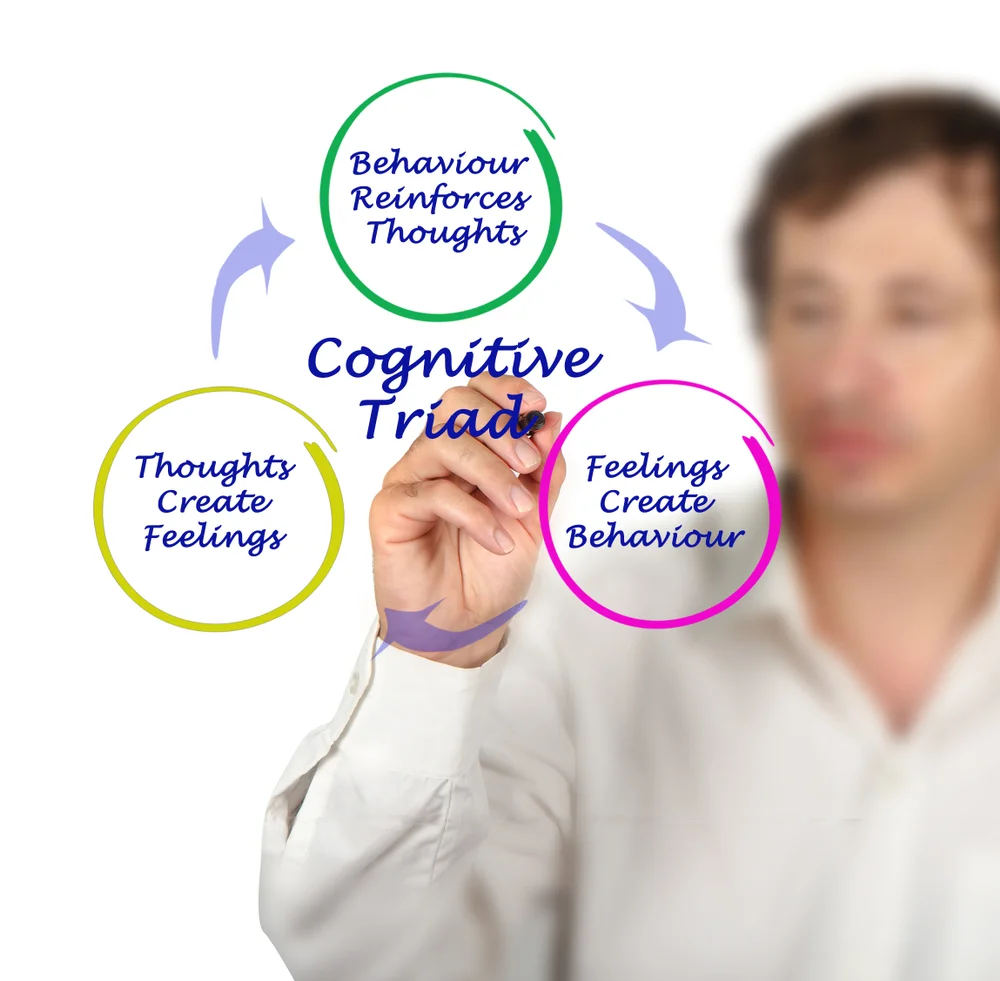CORE COUNSELLING
Psychoanalytic
The Coherence Theory Model
Person-Centred Therapy
Cognitive-Behavioural Therapy (CBT)
Psychoanalytic:
Analyze the unconscious forces that drive you (by bringing them into the conscious mind)
Gauge your ‘resistance’ during sessions (your unwillingness to discuss certain subjects during therapy)
Discuss transference/counter-transference in your everyday life (this involves your everyday interactions with people, what you transfer to them and what they transfer back to you and so on)
Establish to what degree how much of your adult personality was developed in childhood, and how much of it has affected your adult life so far. In so doing, the aim is to unlock, piece by piece, situational inter-connections from your past to access your emotions, using the coherence theory model.
..rewiring..
The Coherence Theory Model: This is for clients who require their locked emotions to be unlocked, so they can be unlearned, replacing the memory bank with new learnings. Most mature people who are rational in most areas of their life can be suddenly undone when a current circumstance, often innocuous in itself, triggers a deep-seated memory from the past that is still tightly enmeshed in their neural wiring. Once the implicit memory is triggered, they’re seized by an emotional state that has a life all its own, with no cognitive awareness of why such a reaction is happening. What the brain requires to unlock and erase a particular learning follows the same three-step process used to adopt it in the first place: reactivating the emotional response, unlocking the synapses (the junction between two nerve cells where information passes) maintaining it, and then creating new learning that unlearns, rewrites, and replaces the unlocked target learning. Emotional learning circuits unlock and become erasable only when a vivid new experience ‘mismatches’ what a reactivated emotional learning leads a person to expect. However, once a neural circuit has been unlocked, if nothing is done to erase and overwrite it during the next few hours, the synapses automatically relock, or reconsolidate, and the circuit re-stabilises, preserving the original learning. The moment of viscerally felt contradiction in the client’s mind is the ‘juxtaposition experience’ they feel. Its approach ‘matches at each step’ those of the reconsolidation process:
First, evoke into direct experience the emotional learnings underlying the client’s unwanted patterns,
Then find a vivid knowledge/experience that contradicts those learnings,
Then combine those two into a juxtaposition experience and repeat it several times, similar to how affirmations work.
..the more personal approach..
Person-centered therapy:
This is a humanistic approach that deals with the ways in which you perceive yourself consciously (self-concept), rather than how a therapist can interpret your unconscious thoughts. I use this type of therapy to ascertain your full potential as a human being. This involves how you view your ‘perceived’ current level of self-actualization (the fulfilment of your talents and your potentialities). This ‘client/therapist’ interaction itself is very important, because of the positive interactions with the therapist and you are therapy themselves.
Self-concept refers to your perception of yourself. Most importantly, it is not necessarily your ‘real and experiencing self’. When your self-concept is in harmony with your own value system, there is no barrier to your ‘actualization’ tendency and hence, the fully functioning ‘you’ will be continually in the process of change. This ‘change’ is in the direction of congruence and openness to new experience. However, when positive regard, external love, care and affection is ‘conditional’ for acceptance (rather than unconditional) and these conditions of worth are placed in one’s childhood, you are likely to experience a state of incongruence in your adult life to an extent that you deny and repress thoughts and feelings to fit your self-concept.
The results that can be achieved through person-centered therapy is viewed as directing you towards greater harmony of personality and openness to experience by:
Perceiving the world in a differentiated manner rather than by generalisations,
Gaining a greater reliance on personal experience as the source of values,
Increasing awareness of denied experiences and repressed thoughts,
Describing and owning your inner feelings and the matching of these experience with greater awareness.
From a client-centred perspective, this can be achieved in therapy when the therapist creates a climate of “empathy and unconditional positive regard”. Hence, the client (you) plays the role of an expert as you are considered capable of finding solutions to your problems, and the role of the therapist (me) is as a facilitator to ‘your’ change of self-concept.
Cognitive-Behavioural Therapy (CBT):
CBT is a widely practiced psychotherapy, based on the theory that it is not actual events that cause our problems and various disorders, but the meanings we give to these events. It focuses on the here and now and involves clear identification of the problem, establishing attainable goals, empathic communication, frequent feedback, reality checks, homework assignments and teaching you to use learned tools to promote positive behavioural change and growth. This is a short-term therapy technique to teach you to change your unwanted behaviours by changing your thought patterns. The premise of CBT is that our thought patterns (cognition) and interpretations of life events greatly influence how we behave and ultimately, how we feel. It covers the following areas:
Identifying problem areas,
Developing awareness of automatic thoughts,
Distinguishing rational and irrational conclusions,
Stopping negative thinking,
Challenging underlying assumptions,
Seeing a situation from different perspectives,
Stopping catastrophizing (thinking the worst),
Identifying what is realistic,
Testing perceptions against reality,
Correcting thinking so that it more closely resembles reality,
Examining the validity and usefulness of a particular thought,
Identifying and modify distorted beliefs,
Enhancing awareness of mood,
Keeping a cognitive behavioral diary,
Gradually increasing exposure to things that are feared,
Avoiding generalizations and all or nothing thinking,
Stopping personalizing and taking the blame,
Focusing on how things are rather than how they should be,
Describing, accepting and understanding rather than judging.
The five top benefits from CBT are:
You become more rational (You think and believe rational things, instead of allowing automatic negative thoughts and feelings to control the brain. The brain is a neutral object that will respond in the way we train it to respond.)
You learn to control your thinking (You learn strategies to stop unwanted thinking and learn to think clearly and rationally.)
Your beliefs about yourself change (As you feel more in control of your thoughts, your belief system about yourself changes and you develop confidence.)
You can calm down and relax (The first thing we learn in social anxiety therapy is to respond to anxiety in a different way than we have in the past. Anxiety no longer frightens us and freaks us out or has power over you. We learn to approach it with calmness and peace. We learn to handle situations by being more relaxed and less anxious.)
You expect better outcomes (Because of our prior history, we expected things to turn out poorly for ourselves. As our thoughts and beliefs change, we begin to expect more rationally. Our expectations become more in line with logic and common sense. As a result, what we expect to happen, happens.)
Family Systems Model:
This model is based on the premise that we all play different roles within the familial structure, depending on which person we are interacting with at each given moment. The essence of this model suggests that each individual exists within the family structure playing more than one role in an environment, which, by its very nature, makes familial interaction difficult and fraught with many possibilities of miscommunication and misunderstanding. Family therapy is language-based, client-directed and focused on relational processes rather than step-by-step techniques. It draws on the idea the family in its entirety acts as one overall emotional unit, with many other sub-units. When this system is applied to families, it suggests behaviour is both often informed by and inseparable from the functioning of one's family of origin. The aim is to achieve cohesion and adaptability.
Three basic approaches:
Structural: I look at family relationships, behaviors, and patterns as they are exhibited within the therapy session in order to evaluate the structure of the family. Employing activities such as role play in session, I also examine subsystems within the family structure, such as parental or sibling subsystems.
Strategic: I examine family processes and functions, such as communication or problem-solving patterns, by evaluating family behaviour outside the therapy session. Therapeutic techniques may include redefining a problem scenario or using paradoxical interventions (for example, suggesting the family take action seemingly in opposition to their therapeutic goals) in order to create the desired change. This produces rapid change, without the need for intensive analysis at the source of the problem.
Intergenerational: This acknowledges generational influences on the family and individual behaviour. Identifying multigenerational behavioural patterns, such as how the family manages anxiety, can help you to see how your current problems may be rooted in previous generations.
My role in this scenario is to extract from you each different role that you play in each different interaction with each different family member, while at the same time, recognising that there is only one you. This, “differentiation of self”, or the ability to distinguish between your thoughts and emotions with each different family member, is key. The most common aspect which comes up in family therapy, is identifying victim/persecutor/rescuer emotional triangles. The results gained from this type of therapy shows you exactly what role you are playing in each familial interaction and how your behaviour changes (and is different) during each familial interaction. It may be necessary to learn new or different behaviours when interacting with different members. I can advise you on behaviour changes you can use to make improvements within your family unit.
© 2019 marcusnicholson.global
© MarcusNicholson - The Relationship And Sexuality Mentor






